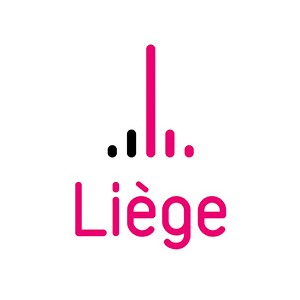Félix Vallotton, The letter

Félix Vallotton
(Lausanne 1865 – Neuilly-sur-Seine 1925)
The Letter, 1914
Oil on canvas
88 x 82 cm
Inv.BA.AMC. 05b. 1921.000759
Acquisition at Salon triennal de Liège August the 1st 1921
The eye is first drawn to the bright, slightly acidic yellow, tending towards green, nuanced by a play of contrasts formed by the shadows of the folds of a loose blouse. The eyes then rest on the throat, a very light triangle almost at the centre of the composition, before moving on to the face, in faint chiaroscuro, with regular features, marked eyebrows, surrounded by golden red hair, in a short and natural cut, daring at that time, 1914. The gaze is serene but tinged with melancholy. On his lap, a letter held in his fingertips, a few scribbled lines, crumpled paper, words that have probably been read and reread.
Vallotton was a great portraitist: he painted dozens of portraits, of naked or half-naked women, in sensual poses or, on the contrary, hieratic faces, marking a certain distance from the viewer, in sober and elegant attitudes against a neutral background.
Félix Vallotton came from a bourgeois Protestant family in Lausanne, where he was born in 1865. He left Switzerland at the age of 18 to enter the Académie Julian in Paris in 1883, a public school that he preferred to the Beaux-Arts because of the freedom it offered. He was fascinated by the portraits of the German Renaissance painter Hans Holbein the Younger and tirelessly copied the great masters on display in the Louvre, Dürer, Leonardo da Vinci and Ingres.
Struggling against the bourgeois society of his time, he showed his sympathy for the anarchist movement and in 1897 joined the Nabis group, formed a decade earlier by five of his former students: Maurice Denis, Pierre Bonnard, Paul Sérusier, Ker-Xavier Roussel and Paul-Elie Ranson. This group, stimulated by Gauguin's synthetism, sought to return to the "pure" sources of art, Egyptian painting, Japanese prints and medieval stained glass. They intended to break resolutely with the modelling and perspective developed since the Renaissance, or with Impressionism, which they considered too affected. These artists favoured pure, flat colours and rhythmic harmonies. On this basis, each of the members produced very diverse works.
Vallotton specialised in woodcuts, with stylised forms and a clear division between black and white. The engravings he published in numerous magazines earned him recognition from the Parisian avant-garde as well as internationally. He was an ebullient artist, an engraver, an illustrator, a painter (more than one thousand seven hundred paintings) but also an art critic and a writer, to whom we owe two plays and a novel, La vie meurtrière, written in 1907-1908 and published after his death in 1925, at the age of 60.
A seducer, he ended up marrying Gabrielle, the daughter of the art dealer Alexandre Bernheim, at the age of 35. It can be considered that he became part of this large bourgeois family. He took French nationality and gave up engraving to devote himself almost exclusively to painting: portraits of bourgeois, intellectuals and artists, landscapes, a few still lifes and interior scenes.
The letter is one of these mature works, a classical composition in a style that is still personal, quite refined, and very modern in its voluminous and simple forms and in the expressiveness of the colours. The figure of the reader is a recurrent theme in Western painting. It often emanates an intimate and enigmatic atmosphere, as the viewer is bound to imagine the contents... Today, we observe this pensive young woman with a touch of nostalgia: no more letters to wait for, to read over and over again, to hide in a box. Just e-mail or a quickly sent message on a mobile phone.
Emmanuelle Sikivie
Specific attaché
Art historian



